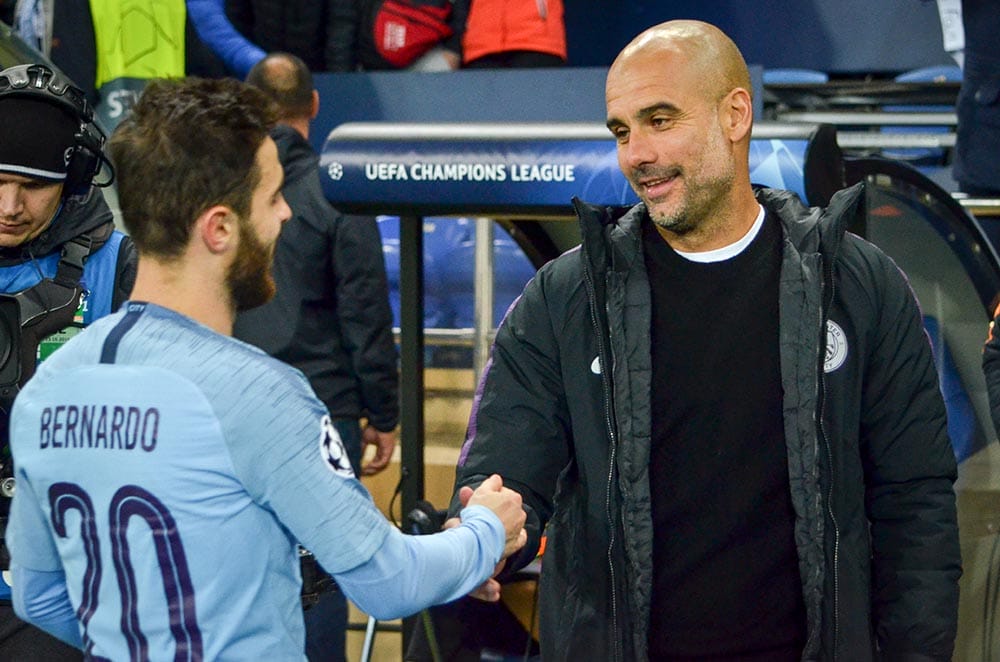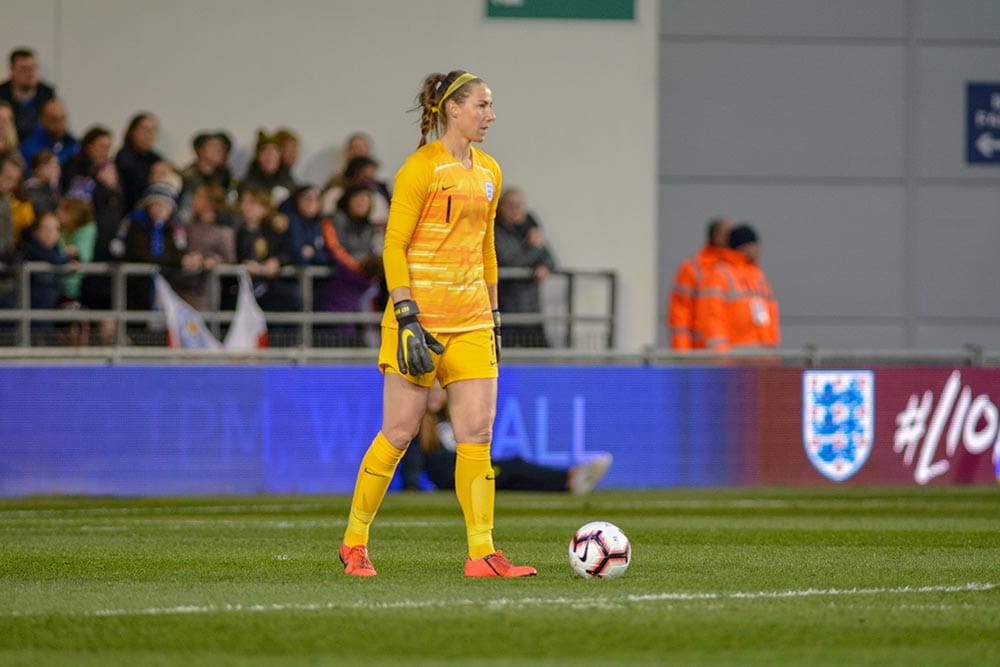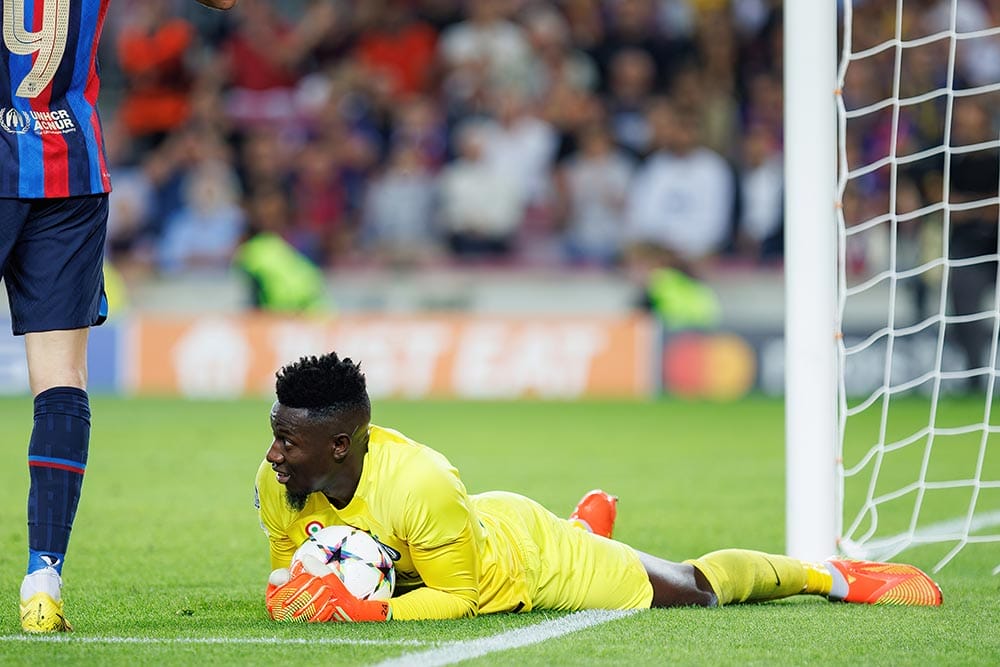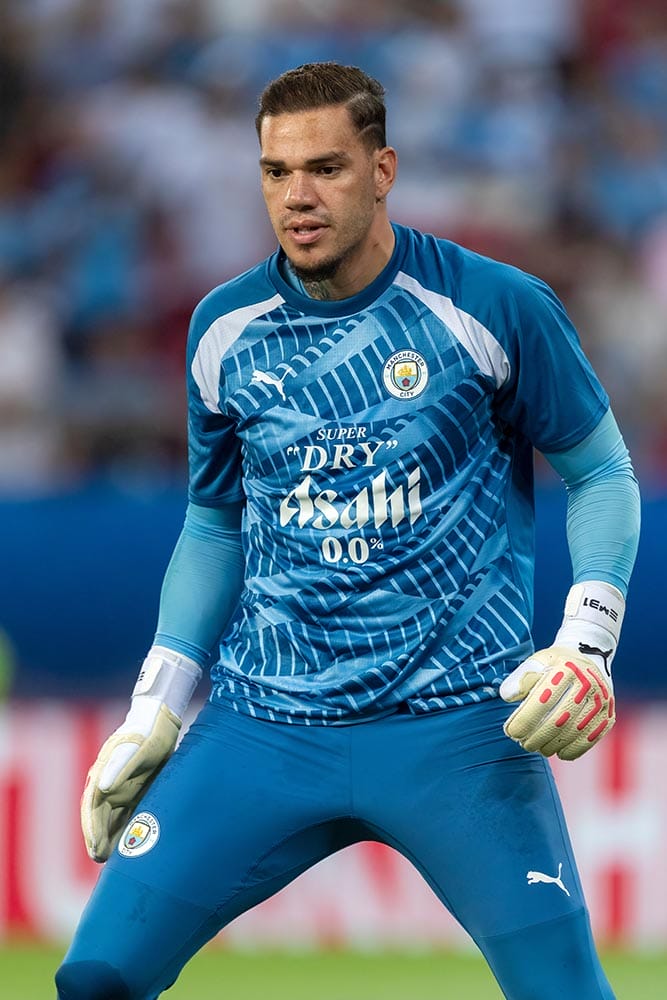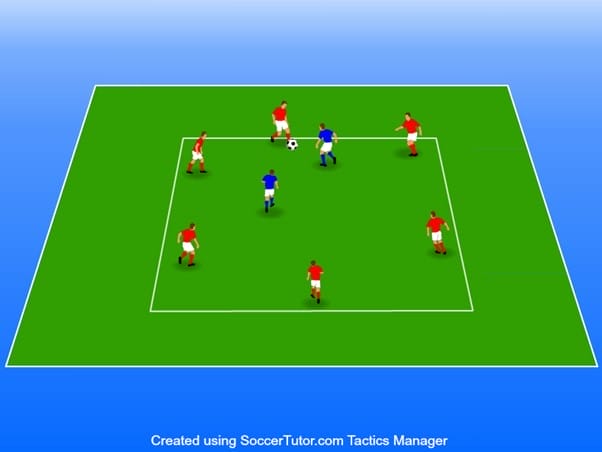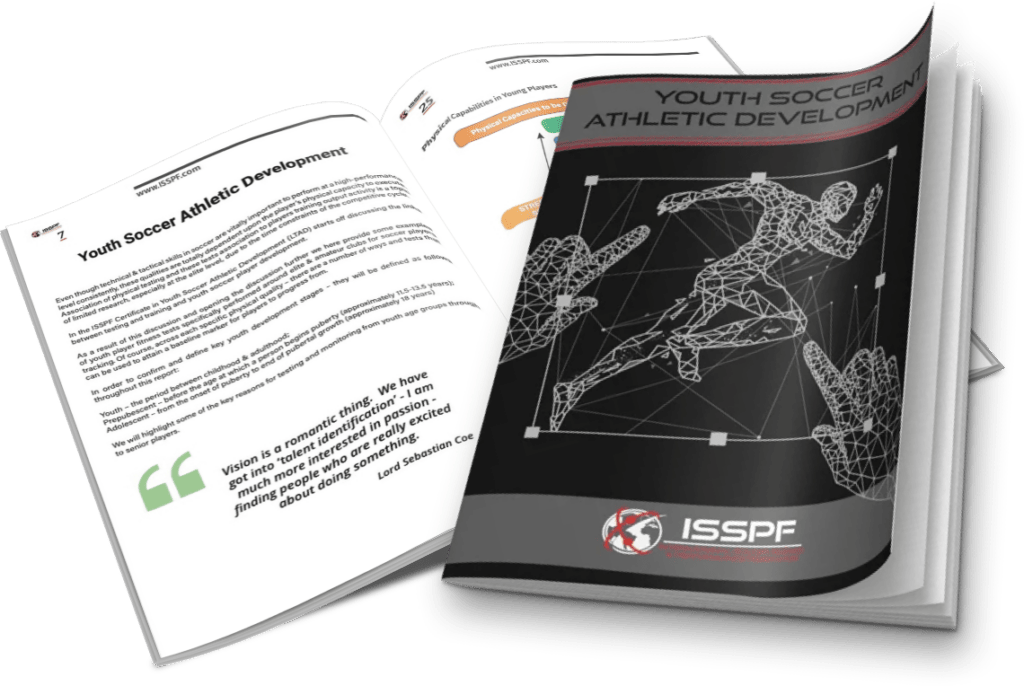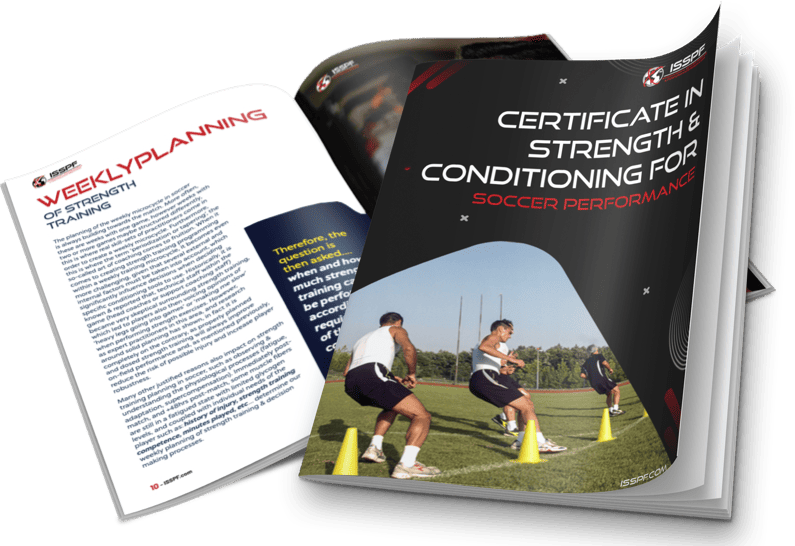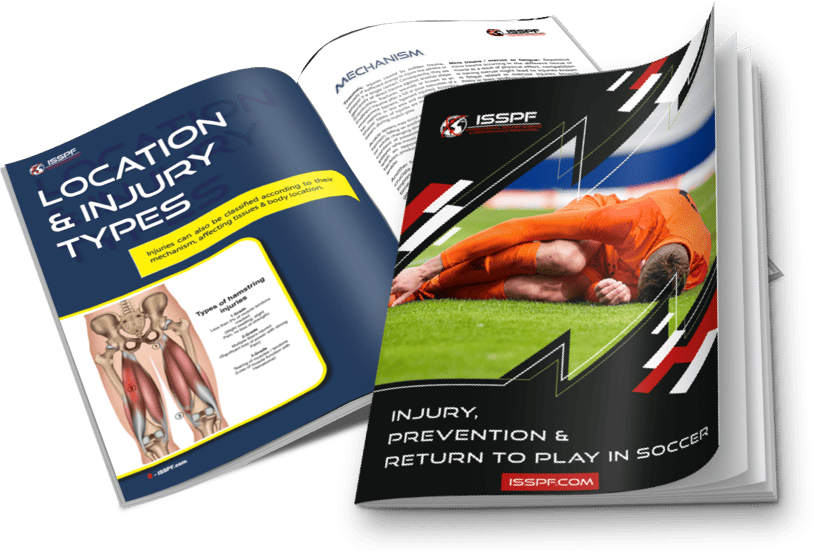Soccer, is a sport that stands as a testament to its constant evolution. Over the years, tactics and strategies have undergone remarkable transformations, spurred by innovation and a relentless pursuit of that elusive competitive edge. In the contemporary era of soccer, modern coaches have boldly introduced captivating tactical modifications that have reshaped the very essence of the game.
Notably, the deployment of inverted full backs and centre defenders in full back positions has emerged as a revolutionary paradigm shift.
These strategies have not only altered the dynamics of the build-up phase but have also paved the way for centre backs to explore uncharted territories within central midfield, effectively overwhelming their adversaries through numerical superiority.
Physical Training & Soccer Methodology Course – TAKE NOW
The Role of Inverted Full Backs
In days gone by, full backs were often relegated to the role of steadfast defenders, entrusted primarily with the responsibility of providing width to the team and lending support to the attack when the need arose.
However, the landscape of modern soccer coaching has heralded a paradigm shift that redefines the essence of full back play. This transformation hinges on the strategic deployment of inverted full backs—a concept that demands a closer examination.
- Creating Overloads – At the heart of this tactical transformation lies the ingenious idea of overloading specific areas of the field. Inverted full backs are strategically positioned to outnumber their opponents in pivotal zones, deftly manoeuvring infield during the build-up phase. This deliberate shift towards the central midfield engenders a numerical advantage, especially in the middle third of the pitch, allowing teams to maintain an iron grip on possession while dictating the tempo of the game.
- Ball-Playing Abilities – The modern full back is no longer confined to the conventional constraints of their position. They are now expected to be virtuosos in ball-playing, comfortable in the tightest of spaces, boasting pinpoint passing accuracy, and possessing the visionary acumen to pick out teammates in advanced positions. This expanded skill set equips teams to play out from the back with unparalleled efficacy, creating fluid passing sequences that confound opposition defences.
- Defensive Versatility – Inverted full backs are multifaceted assets who possess the unique ability to seamlessly transition into defensive roles when exigencies dictate. Their adaptability is a pivotal factor in maintaining the team’s structural integrity, ensuring defensive stability remains intact even as they venture forward to bolster the attack.
A Tactical Masterstroke
In the ever-evolving landscape of soccer tactics, another intriguing development has come to the fore—the deployment of centre defenders in full back positions. This strategic manoeuvre serves a multifaceted purpose, with a primary objective being to liberate central defenders, allowing them to actively partake in the build-up phase and fashion numerical advantages within the heart of central midfield.
Ball-Playing Centre Defenders:
Centre defenders, traditionally renowned for their resolute defending, are now being recognized for their latent ball-playing prowess. Placing them in full back positions harnesses their innate abilities to exploit passing lanes and exhibit visionary prowess. From these wider positions, they orchestrate attacks, stretching the defensive lines of their opponents.
Overloading Central Midfield
The decision to shift centre defenders into full back roles is particularly adept at overloading the central midfield area. This strategic choice proves especially effective in disentangling compact defensive structures employed by opposing teams. It enables the team to achieve numerical superiority, outmanoeuvring their adversaries within the bustling confines of the midfield battleground.
Central Defenders as Deep Playmakers
Centre backs who are redeployed into full back positions often metamorphose into deep-lying playmakers. Their distribution from these broader positions can act as the key to unlocking resolute defences and fabricating goal-scoring opportunities. Their ability to swiftly switch the play and deliver precise long passes adds a new dimension to the team’s offensive arsenal.
The utilization of inverted full backs and centre defenders in full back positions constitutes a testament to the dynamic nature of contemporary soccer tactics.
As modern coaches relentlessly seek innovative methods to gain a competitive edge, these strategies have emerged as proven assets, endowing teams with numerical ascendancy in pivotal areas of the field while concurrently safeguarding defensive stability.
Success in today’s elite soccer landscape demands a willingness to adapt and experiment with these cutting-edge tactical transformations. As the game continues its inexorable evolution, we can only anticipate further exhilarating developments in the captivating realm of soccer tactics, promising a future where innovation and adaptability remain the keys to victory on the pitch.
Tactical Development – The Role of Ball-Playing Goalkeepers in Modern Soccer
Furthermore, in the ever-evolving landscape of soccer tactics, the role of goalkeepers has experienced a significant transformation.
The emergence of ball-playing goalkeepers, epitomized by players like Ederson at Manchester City and Onana at Manchester United, has redefined the way teams build their play from the back. This report delves into the tactical evolution of employing ball-playing goalkeepers, their key attributes, and the benefits they bring to a team’s overall strategy.
Traditionally, goalkeepers were primarily known for their shot-stopping abilities and safe distribution. However, in recent years, a new breed of goalkeepers has emerged, showcasing exceptional ball-playing skills.
Ederson and Onana are prime examples of this evolution, demonstrating that goalkeepers can be pivotal playmakers rather than mere custodians of the net.
Attributes of Ball-Playing Goalkeepers
- Precise Passing: Ball-playing goalkeepers are characterized by their ability to deliver precise, long-range passes, both on the ground and in the air. This attribute allows them to initiate attacks from deep positions.
- Composure Under Pressure: These goalkeepers exhibit remarkable composure under high-pressure situations. They can make split-second decisions and maintain their calm in possession, even when pressed by opposing forwards.
- Footwork and Mobility: Adept at using their feet, ball-playing goalkeepers are comfortable with the ball at their feet and can move quickly to adjust to various game situations.
- Reading the Game: They possess an astute understanding of the game, enabling them to read the play, anticipate passing lanes, and make intelligent decisions that benefit their team’s build-up.
Tactical Implications
The inclusion of a ball-playing goalkeeper in a team’s lineup carries several tactical advantages:
- Enhanced Build-Up Play: Ball-playing goalkeepers act as an additional outfield player during the buildup phase, providing an extra passing option for defenders. This facilitates the team’s ability to progress the ball methodically and break through high-pressing opponents.
- Breaking the Lines: Their ability to deliver long, accurate passes enables teams to bypass the opposition’s midfield lines, opening up opportunities for quick counter-attacks or incisive passes into advanced areas.
- Maintaining Possession: Ball-playing goalkeepers contribute to maintaining possession in tight spaces, which is crucial in modern soccer, where possession-based tactics are prevalent.
- Creating Goal-Scoring Opportunities: Their precise distribution can lead to goal-scoring opportunities, as they can initiate attacks with long passes, through balls, or accurate throws that catch the opponent off-guard.
Case Studies: Ederson and Onana
- Ederson (Manchester City): Ederson is widely regarded as one of the best ball-playing goalkeepers in the world. His exceptional passing range and ability to pick out teammates in advanced positions have become key elements of Manchester City’s possession-oriented style of play. His distribution often triggers their quick transitions from defense to attack.
- Onana (Manchester United): Onana, a recent addition to Manchester United, has quickly made an impact with his ball-playing abilities. His quick thinking, accurate distribution, and ability to read the game align with Manchester United’s tactical approach, emphasizing fluid build-up from the back.
The tactical development of employing ball-playing goalkeepers, exemplified by players like Ederson and Onana, represents a significant shift in modern soccer. Their attributes and contributions have a profound impact on a team’s overall strategy, enhancing build-up play, breaking opposition lines, and creating goal-scoring opportunities.
As the game continues to evolve, the role of goalkeepers will likely become even more central to a team’s success, making the inclusion of a ball-playing goalkeeper a strategic imperative for ambitious soccer clubs.
Soccer coaches at all levels should recognize the value of developing these skills in aspiring goalkeepers and consider the tactical advantages of having a ball-playing goalkeeper in their squad.
Physical Training & Soccer Methodology Course – TAKE NOW
Physical Training & Soccer Methodology Course
🚀 Take the next step & increase your knowledge! Join Our Course Today! 🏆
🌟 Are you looking to take your coaching & players to the next level? ISSPF’s Physical Training and Soccer Methodology Course is there to help! 🌟
🔥 Unlock Your Potential! 🔥
🎯 Expertise: Excel in coaching development, training and planning. ⚽️
⚽️ World-Class Curriculum: Learn from the best. 🌍
💪 Boost Your Players Fitness & Preparation: Gain that coaching edge. 🏋️♂️
🌍 Global Faculty: Develop a global methodology used worldwide. 🤝
🎓 Certification: Stand out and advance your career. 📜
🔔 Secure your spot today! Learn in your own time ⏳
🌟 Ready to Take Your Soccer Journey to New Heights? 🌟
👉 Enrol now to unlock your potential! ⚽️💪
🔗 Link: https://www.isspf.com/physical-training-and-soccer-methodology-course/
📣 Don’t settle for average. Become extraordinary! Join ISSPF’s Course and let your skills shine. 💫🏃♂️🌍
Share this article:

